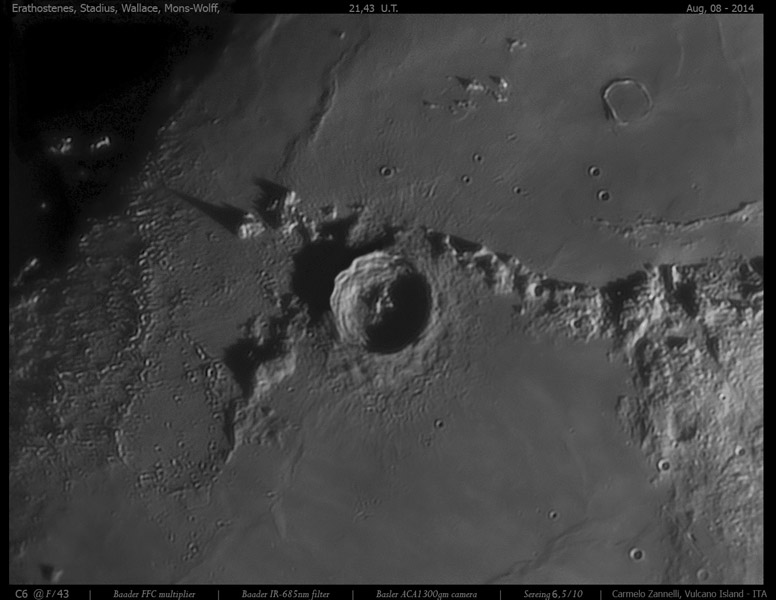October 21, 2014
Classic View with a Classic Scope

image by Carmelo Zannelli, Vulcano Island, Aeolian Isles - Sicily - ITALY
This image, made with my little Celestron C6 (150mm diameter) from the Island of Vulcano during my summer holidays, is centered on beautiful Eratosthenes crater. This feature gave its name to the term "Eratosthenian" in the geological history of the moon. The date of its formation, which is thought to have occurred about 3.2 billion years ago, is used as a reference for the beginning of this lunar geological era. The crater Stadius, located on the north end of the Sea Insularum, is the remains or "ghost" of a crater covered by basaltic lava flows. Its floor is pockmarked by many small secondary craters, and only the northeastern rim of Stadius remains almost intact, uniting through a linear ridge, to the western bastion of Eratosthenes. The rest of the structure forms a ghost of the original circle, and there is no indication of the remains of a central peak.
Carmelo Zannelli
Technical Details
Celestron C6 StarBright to F / 43 - Baader FFC multiplier - Baader Ir-685nm filter - Basler ACA1300gm room - Seeing max 6,5 / 10 in IR685nm band
Related Links
21st Century Atlas chart 18.
Yesterday's LPOD: Big Cooling Cracks
Tomorrow's LPOD: Edge Details
COMMENTS?
Register, Log in, and join in the comments.



